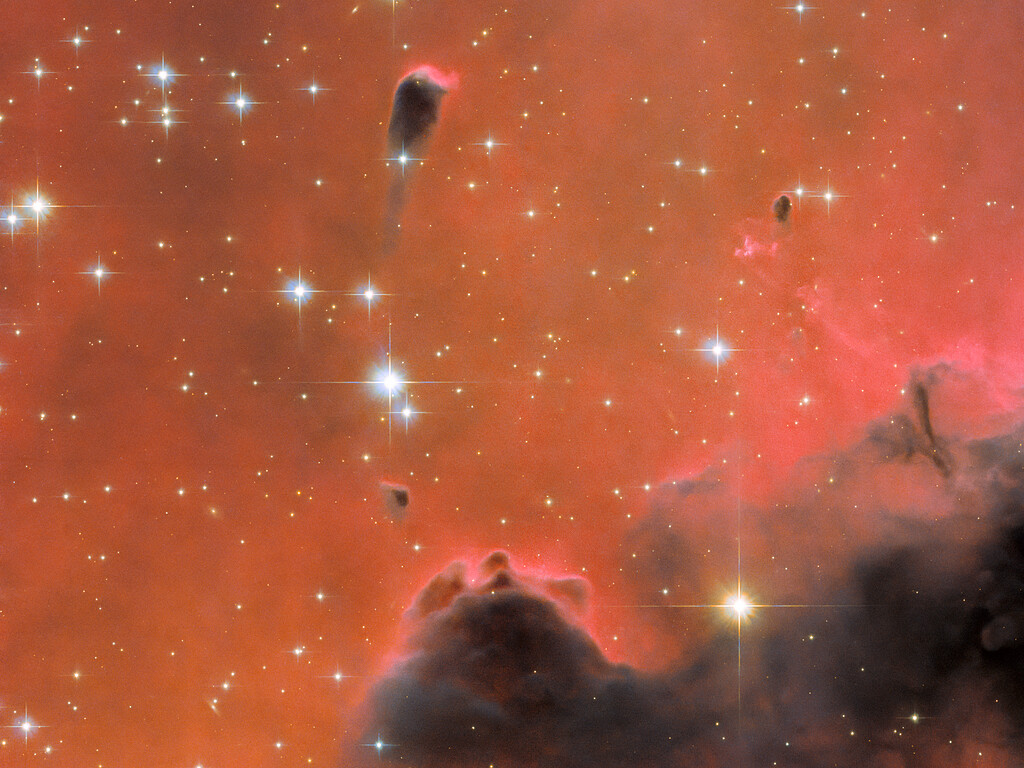This luminous new image from Hubble telescope shows a well-known nebula, about 7000 light-years from Earth

This new picture from the NASA/ESA Hubble Space Telescope shows a small region of Westerhout 5, a well-known nebula which lies about 7000 light-years from Earth in the constellation Cassiopeia.
This luminous image hosts a free-floating Evaporating Gaseous Globule (frEGG), a particular class of Evaporating Gaseous Globules (EGGs). Both frEGGs and EGGs are regions of gas that are sufficiently dense that they photoevaporate less easily than the less compact gas surrounding them.
FrEGGs are distinguished from EGGs by being detached and having a distinct "head-tail" shape. Both are of particular interest because their density makes it more difficult for intense UV radiation, found in regions rich in young stars, to penetrate them.
"EGGs were only identified fairly recently, most notably at the tips of the Pillars of Creation, which were captured by Hubble in iconic images released in 1995. FrEGGs were classified even more recently, and are distinguished from EGGs by being detached and having a distinct ‘head-tail’ shape," the European Space Agency (ESA) wrote in a blog post.
In this Hubble image, several large and pale blue stars with prominent cross-shaped spikes are scattered towards the top-left. A small tadpole-shaped dark patch floating near one of these stars in the upper centre-left is the frEGG. This buoyant-looking bubble is lumbered with two rather uninspiring names - [KAG2008] globule 13 and J025838.6+604259.
The red colour is caused by a particular type of light emission known as H-alpha emission, which occurs when a very energetic electron within a hydrogen atom loses a set amount of its energy, causing the electron to become less energetic and this distinctive red light to be released.
🎄Just in time for the festive season, this Picture of the Week shows a small region of a nebula 7000 light-years from Earth. The image hosts a variety of interesting features, which you can read all about here https://t.co/50U68j8M5X📷 @esa / @HUBBLE_space & @NASA R. Sahai pic.twitter.com/jKbH8ysTHu
— HUBBLE (@HUBBLE_space) December 19, 2022
- READ MORE ON:
- Westerhout 5 nebula
- Hubble Space Telescope
- frEGGs
- Pillars of Creation










